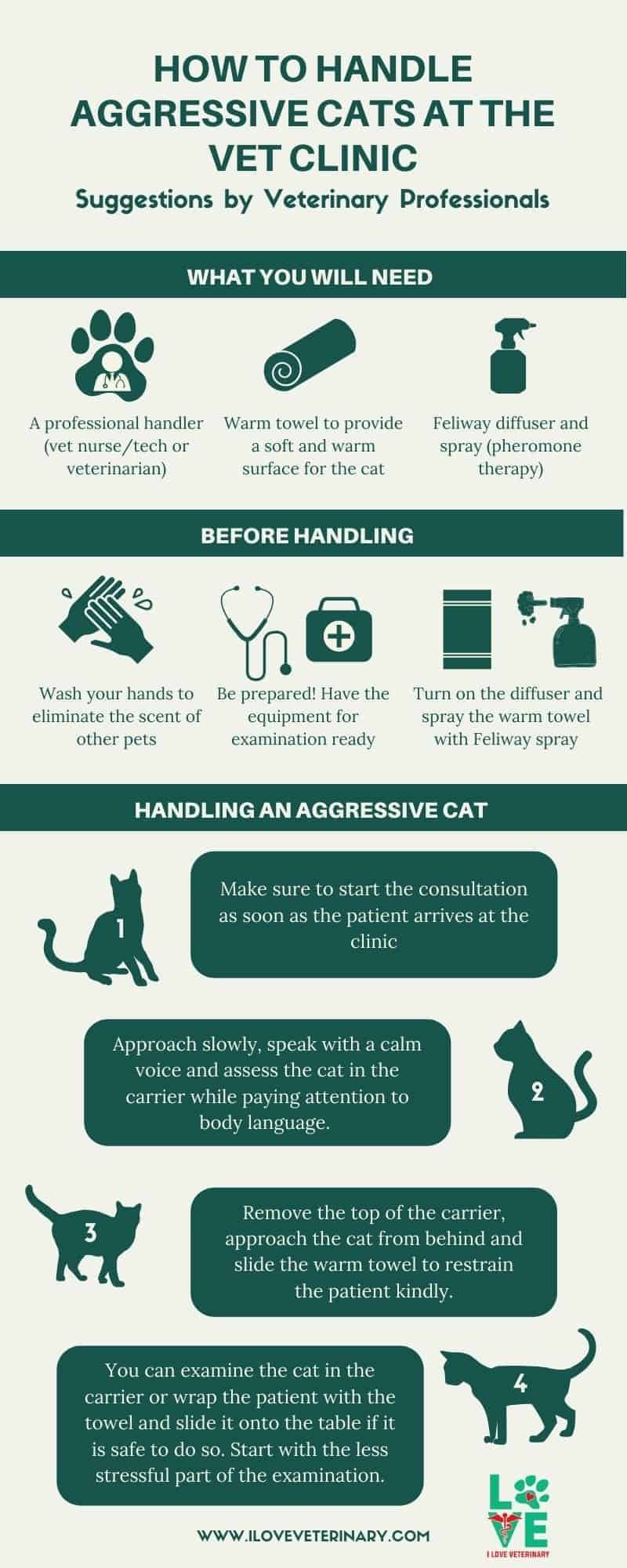Do you often find asking yourself the question of how to deal with an aggressive cat at the Vet Clinic? Handling a cat can be a stressful experience for everyone involved, and it can lead to aggression if not appropriately addressed.
When the clients are making an appointment it is essential to educate them about how important it is to make adjustments before and during the trip to the vet.
Why Are Cats Sometimes Aggressive?
Cats are unpredictable, affectionate, and utterly adorable. They also have their fair share of quirks. Sometimes they’re aggressive to your guests. Sometimes they hide from you when they know you’ve been having a bad day. And sometimes they jump from the highest heights only to break their tiny little ankles in the process. In other words, cats are just like humans… well, except that they love when their owners eat tuna fish.
Cats are more apt to be aggressive the older they get. Cats can reach middle age at four years old, and senior-citizen status at 11. Although they’re more likely to be affectionate than aggressive, an old cat may have all the physical capabilities of a younger cat but none of the stamina.
Senior cats can have problems with arthritis and other health issues. Because of arthritis, cats may feel painful, heat, or swelling in the joints. This can result in a more difficult-to-handle cat who does not enjoy being picked up or petted.
A cat with chronic joint pain may also be irritable and unpleasant to be around. While many cats are great companions for the elderly, some senior cats experience joint pain that they try to hide from you.
What Should I do Before Taking My Cat to The Vet?
- Carrier: appropriate size, secure, and with a removable top. They should get the cat used to the carrier beforehand.
- Feliway: spray Feliway solution in their bedding at least 30 minutes before the trip to the vet.
- Prescribed medication: If the patient has a history of aggression, help manage the fear by reminding the owner to give some medication before the consultation.
- When carrying the cat to the vet: the owner should minimize movement by supporting the carrier from the bottom with two hands.
- When transporting the pet to the vet by car: the carrier should be secure on the floor or the passenger lap.

What You Will Need to Handle The Aggressive Cat
- A professional handler (vet nurse/tech or veterinarian) for the safety of the animal, staff, and pet owner.
- Warm towel to provide a soft and comfortable surface for the cat.

Before handling:
1) Wash your hands to eliminate the scent of other pets.
2) Be prepared! Have the equipment for examination ready.
3) Turn on the Feliway diffuser.
4) Spray the warm towel with Feliway classic spray.

What is The Proper Way to Handle an Aggressive Cat?
1) Make sure to start the consultation as soon as the patient arrives at the clinic.
2) Approach slowly, speak with a calm voice and assess the cat in the carrier
while paying attention to body language. Observe signs of fear or aggression.
3) The goal is that the cat gets out of the carrier voluntarily. If the patient shows aggressive behavior, the handler will need to remove the top of the carrier, approach the cat from behind and slide the warm towel to restrain the patient kindly.
4) You can examine the cat in the carrier or wrap the patient with the towel and slide it onto the table if it is safe to do so. Start with the less stressful part of the examination.
Note: if step 4 does not work or you need to perform other procedures, you may need to sedate the patient when you get to step 3.
Infographic created by Arais Conde, find out more about her by visiting her Instagram or Portfolio.
